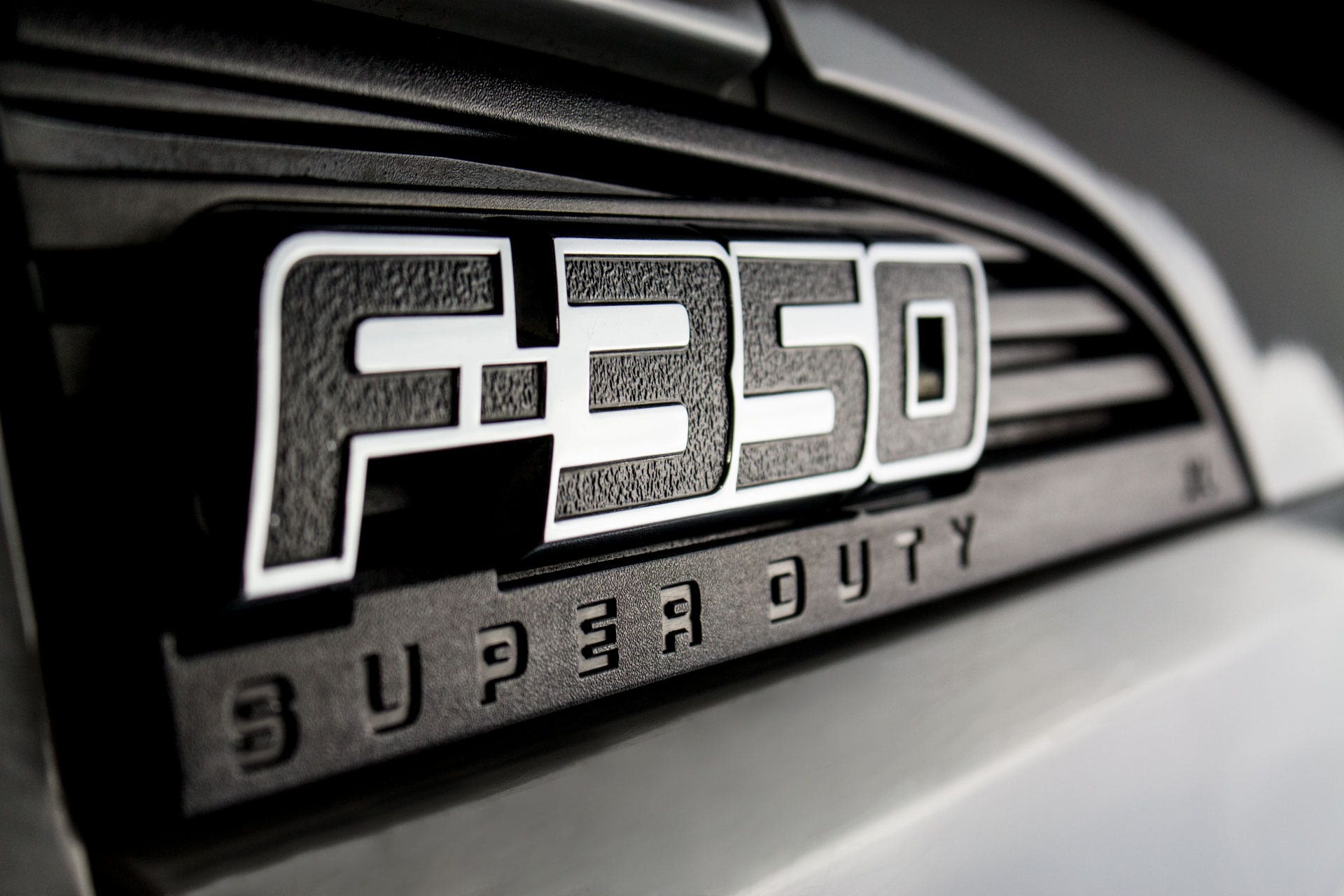
Old Dog, New Tricks - Intercooler R&D, Part 2: Plans & Prototypes
Tucked between the battery and the radiator, buried beneath a tangle of coolant hoses, lies the heart of the Ford Powerstroke 6.7L charge air cooling system. This chunk of aluminum, the air-to-water intercooler, is responsible for keeping your workhorse breathing easy.
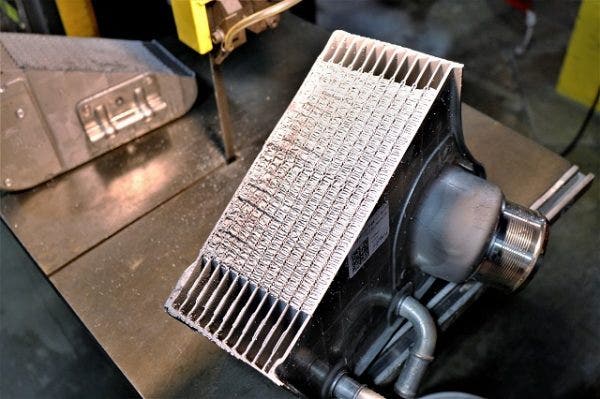
A freshly cut, $500 intercooler. Not a bad Tuesday
When we looked at this project last, we outlined what makes air-to-water intercoolers different from your typical air-to-air intercooler and why they're used in heavy-duty applications. We also took our waterjet cutter to our brand-new OEM intercooler to see what was going on beyond the bland exterior. Once we had evaluated the stock intercooler's strong and weak points, we developed a clear way forward: develop a durable intercooler that will weather any punishment a blue-collar truck could face.
Such simple goals don't always render simple solutions. But despite the complexities of thermodynamics and heat transfer inherent to an air-to-water intercooler, Jason knew what needed to be done.

Example of tube-and-fin (left) and bar-and-plate (right) intercooler cores.
Making a durable intercooler is something we're good at. We've done it a thousand times and then a thousand more. Each time we must, quite literally, weigh our options. When designing an intercooler for a hot hatch or sports car, we need to worry about handling and determine if the added durability and efficiency of a bar-and-plate intercooler is worth the extra weight. In cases like the 6.7, where low-speed towing power and longevity are paramount over weight savings, the benefits of a bar-and-plate core offset the added weight.
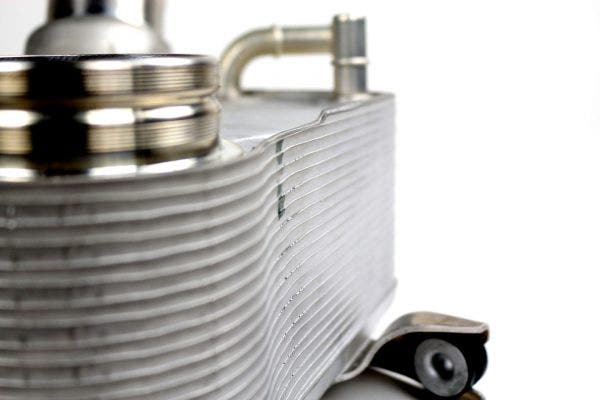
A shot down the side of the intercooler shows the edges of the stacked plates where they are brazed to each other.
The core isn't the only weak point of the stock intercooler, however. As we learned in the last post, the entire intercooler is made up of twelve stacked plates, brazed together on their edges. While the core of the intercooler is where most of the heat transfer happens, these end tanks experience the most pressure under boost. With high boost pressure, it's just a matter of time before the brazed ends of those plates become a million little failure points. To remedy this Jason decided to construct the end tanks from cast aluminum, with the inlet and outlet being CNC machined after casting for a perfect fit and seal. The end tanks will then be welded onto the core, making for an intercooler that's able to withstand just about anything a turbocharger can throw at it.
Aside from being more durable than the stock unit, our intercooler also needs to flow well and cool the charge air efficiently. When it comes to intercoolers, bigger is not always better. Between pressure drop and decreasing efficiency as the core thickens, air-to-air intercoolers often require balance to provide the best cooling performance. Air-to-water intercoolers, on the other hand, are inherently more efficient than their air-to-air counterparts and a compact design can yield great performance. Nevertheless, Jason searched for a way to increase the intercooler's volume and maximize the space available.
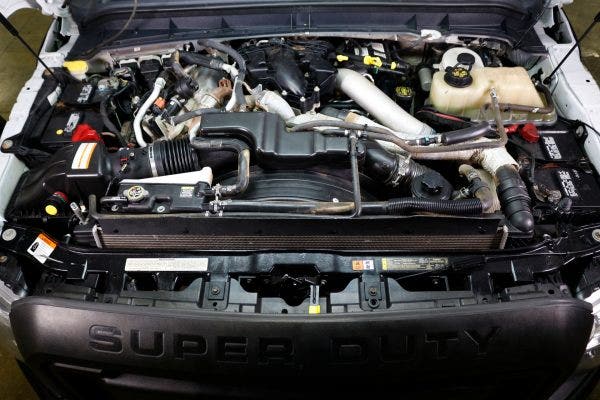
Looking down into the engine bay, it's hard to imagine squeezing anything larger than the stock intercooler underneath all the coolant hoses and lines. But, never one to be limited by the narrow view of the stock system, Jason came up with a clever way to utilize the free space around the intercooler.
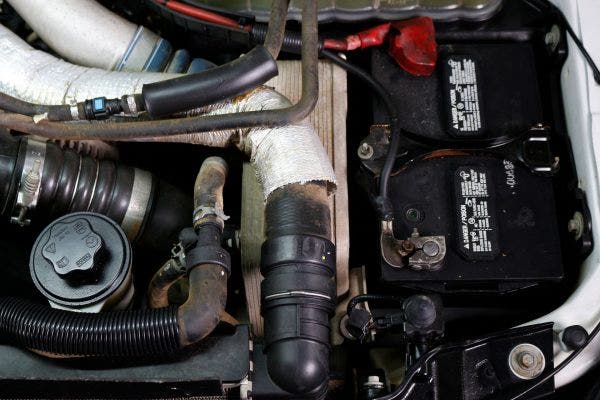
The biggest obstacle he faced was the coolant hose for the primary radiator, which runs directly over the stock intercooler. With no way to move the hose and nowhere to shift the intercooler around the hose, Jason had no choice but to design around it, literally. Incorporating the shape of the hose into the top end tank allowed Jason to increase the volume of the intercooler while keeping the hose safely in place.
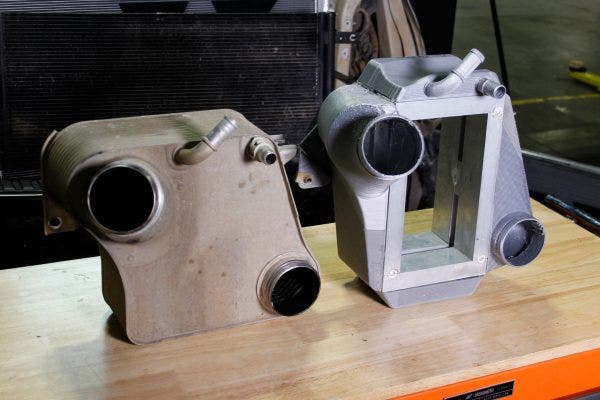
With our goals laid out and a plan to achieve them, Jason began by creating a 3D model using manufacturer data and measurements he had taken from the stock intercooler. After adding his tweaks to the OEM design, Jason sent his model over to the 3D printer to have end tanks printed. At the same time, our fabricator, Mike, welded together some aluminum stock to fill in for our future bar-and-plate core.
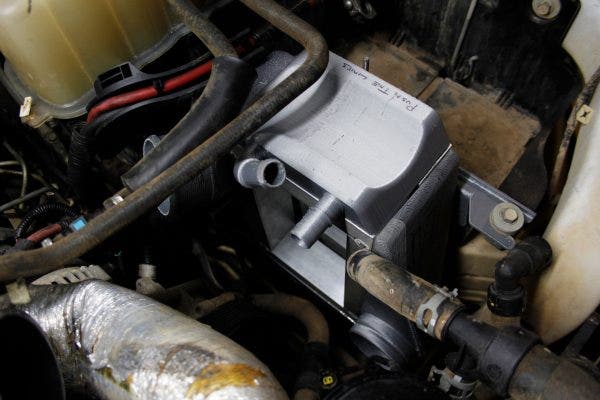
A quick test fit of our 3D-printed and aluminum prototype confirmed that this design could be squeezed into the confines of the 6.7's engine bay well enough. But of course, leaving well enough alone is not what we do at Mishimoto, so Jason made a few more design adjustments, giving the intercooler sharp, clean lines and providing more clearance for the battery and hoses. The result of all this painstaking design is a tough, efficient intercooler that will outlast the stock intercooler without question.
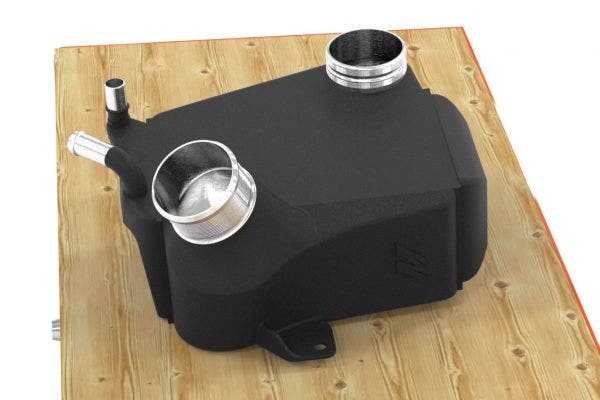
With the prototype designed and test-fit, the next step is to send the drawings over to manufacturing for sampling. Soon, we'll have our first air-to-water intercooler in our hands.
Thanks for reading,
-Steve




